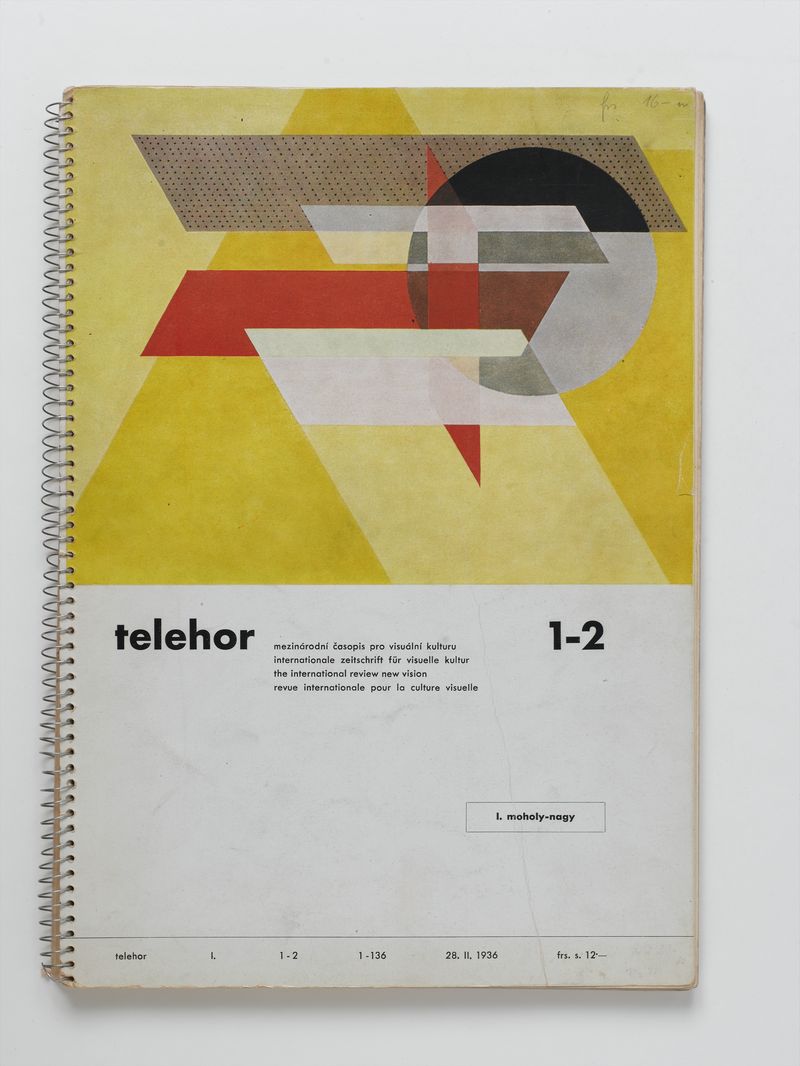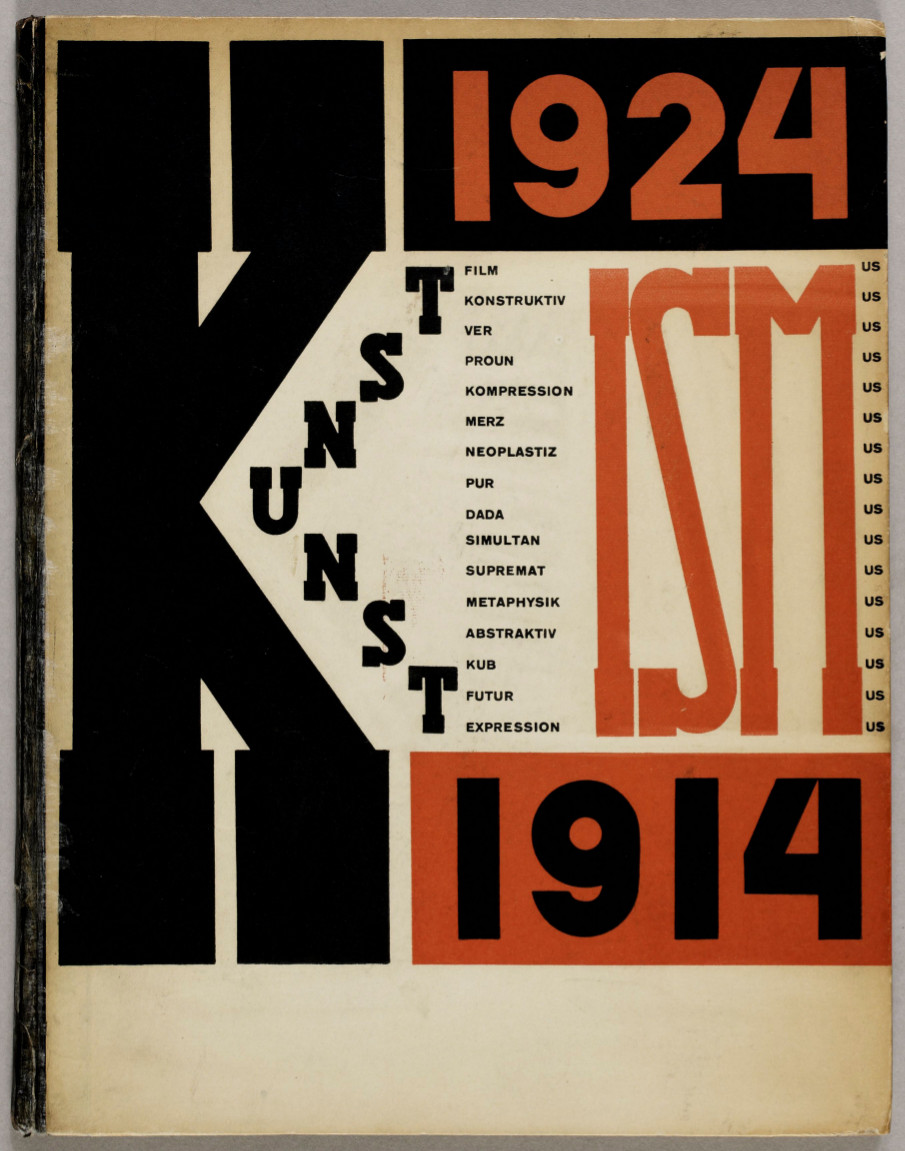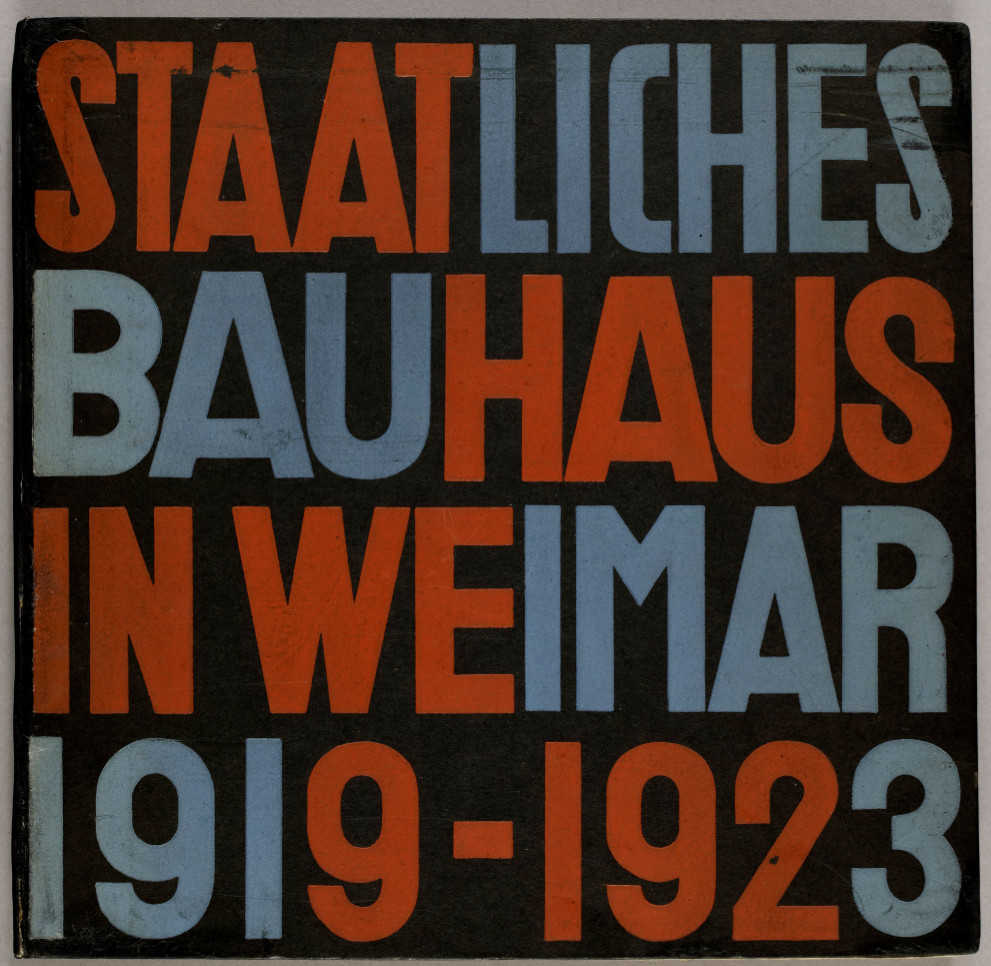Fr. Kalivoda (ed.): Telehor 1-2: Special Issue on L. Moholy-Nagy (1936) [CZ/DE/EN/FR]
Filed under magazine | Tags: · art, avant-garde, colour, design, film, light, photography, vision

Telehor was a project by Czech functionalist architect, theorist and educator, František Kalivoda, who planned it as a 64-page illustrated quarterly dedicated to visual culture. As an editor and publisher, Kalivoda had established an impressive network of collaborators across Europe, however his plans never fully took off.
Its only issue appeared as a book-length publication on the work of artist and Bauhaus teacher László Moholy-Nagy who was at the time already living in London. The magazine has, in the internationalist fashion, sections in several languages, including French, English, Czech, and German.
Contents of the English section: Foreword by Siegfried Giedion, 1935 (pp 27-29), Letter from Moholy-Nagy to Kalivoda, June 1934 (30-32), Moholy-Nagy’s essays “From Pigment to Light”, 1923-26 (32-34), “A New Instrument of Vision”, 1932 (34-36), “Problems of the Modern Film”, 1928-30 (37-40), “Supplementary Remarks on the Sound and Colour Film”, 1935 (41-42), “Once a Chicken, Always a Chicken”, a film script on a motif from Kurt Schwitter’s “Auguste Bolte”, 1925-30 (43-45), Postscript by Kalivoda, 1936 (45-46).
The reproductions run from page 49 through 112.
Publisher Fr. Kalivoda, Brno, 1936
Typography Fr. Kalivoda
Print Typia Press, Brno
138 pages, 69 ills., 29.7 × 21 cm
via Bibliothèque Kandinsky, in the Unlimited Edition
Moholy-Nagy at Monoskop wiki
Kalivoda at Monoskop wiki
PDF, PDF (variant with black cover, 149 MB)
Comment (1)El Lissitzky, Hans Arp: Die Kunstismen / Les ismes de l’art / The Isms of Art: 1914–1924 (1925) [DE/FR/EN]
Filed under artist publishing | Tags: · 1910s, 1920s, architecture, art, art history, avant-garde, film

“Habe eine Idee für das letzte Merz-Heft 1924: ‘Letzte Truppenschau aller Ismen von 1914-24’.” schrieb El Lissitzky in einem Brief. Es gelang ihm, Hans Arp für diese Idee zu begeistern.
This book begins with definitions by well-known artists of the various movements, or forms of art, of the period. They range from Cubism, Futurism, Expressionism, Abstract Art, through Metaphysicians, Suprematism, Simultanism, Dadaism, Purism, Neoplasticism, Merz, Proun, Perism, Constructivism, to Abstract Film. The section is followed by reproductions illustrating each movement.
Publisher Eugen Rentsch, Erlenbach-Zürich, 1925
Typography El Lissitzky
Print Staehle & Friedel, Stuttgart
xi+48 pages, 75 ills., 26.5 × 24.5 cm
Unlimited Edition
PDF (64 MB, via Bibliothèque Kandinsky)
PDF (43 MB, added on 2020-12-5, via Kunsthaus Zurich)
Find more Lissitzky’s publications on Monoskop wiki.
Staatliches Bauhaus Weimar, 1919-1923 (1923) [German]
Filed under book | Tags: · architecture, art, art education, bauhaus, dance, design, drawing, education, film, painting, photography, sculpture, theatre, typography, weimar republic

This work was published on the occasion of the major Bauhaus exhibition in August and September 1923 in 2,000 copies (another 300 were printed in English and 300 in Russian). The colour plates include nine original lithographs by Herbert Bayer, Marcel Breuer, L. Hirschfeld-Mack (2), R. Paris, P. Keler and W. Molar, K. Schmidt (2), and F. Schleifer. The texts are by Walter Gropius, Lyonel Feininger, Paul Klee, Gertrud Grunow, Wassily Kandinsky, László Moholy-Nagy, Oskar Schlemmer, Johannes Itten, Georg Muche, Lothar Schreyer, Gerhard Marcks, Adolf Meyer and others.
Publisher Bauhausverlag, Weimar and Munich, 1923
Typography L. Moholy-Nagy
Cover design Herbert Mayer
Print F. Bruckmann, Munich (texts), V. Lübecke, Erfurt (printing blocks for the 4-color prints), and Dietsch & Brückner, Weimar (colour plates)
225 pages, 20 colour plates, 147 halftone ills., 25 × 26 cm
via Bibliothèque Kandinsky
PDF (325 MB, updated on 2018-3-6)
See also Bauhaus publications on Monoskop wiki.

